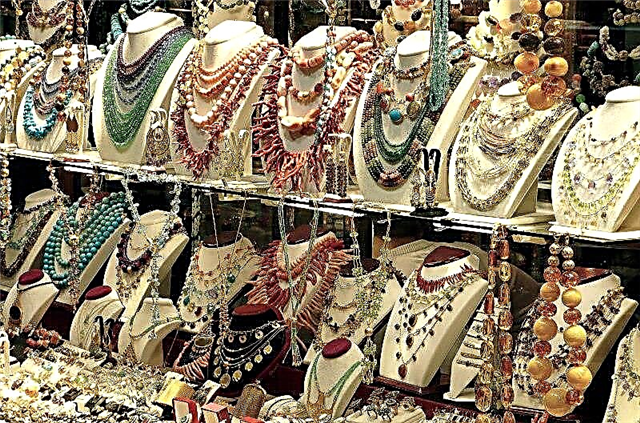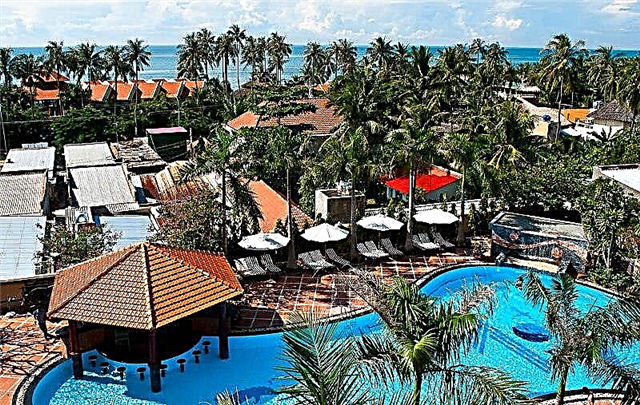Address: Moscow, pl. Revolution
opening date September 4, 2012
Coordinates: 55 ° 45'22.8 "N 37 ° 37'06.8" E
Content:
200 years after the end of the war of 1812, a modern military museum appeared in the capital. It is small in size and occupies only 2 thousand square meters. The materials presented here are of keen interest to domestic and foreign tourists, so the new museum has become one of the most famous museums in Moscow in a few years.

General view of the museum from Manezhnaya Square
Museum history
The first exhibits related to the military events of the early 19th century began to be collected almost immediately after the end of the war with the French. The battle with Napoleon greatly affected Russian society, so many wanted to preserve the memory of his heroes.
In 1868, the philanthropist Emmanuil Dmitrievich Naryshkin intended to give Muscovites a wooden hut, where in the early autumn of 1812 a historical council headed by Kutuzov was held. However, there was an unexpected fire, and the fire destroyed the Kutuzov hut. In the 1880s, according to the project of the Russian architect Nikolai Dmitrievich Strukov, a new hut was built, and a small museum was organized in it.

Museum entrance
The second museum appeared later - in the winter of 1903. In one of the premises of the Borodino station, employees of the local railway at their own expense created a small exposition that told about the famous battle at Borodino. In the same 1903, Muscovites began collecting money for the construction of a Moscow museum. A few years later, their impulse was supported by the authorities, and a special imperial decree appeared on the establishment of a museum in memory of the heroes of the war.
Colonel and member of the military-historical society Vladimir Aleksandrovich Afanasyev was assigned to head the committee for the creation of the museum. First of all, a brochure was published, in which the site of the future museum was discussed, and the country began to prepare for the centenary of the war with the French.

Roofed courtyard of the museum
The first exhibits were exhibited in 1909 in the halls of the Amusement Palace. An exhibition in memory of the heroes of historical battles was also held here. In the year of the 100th anniversary, the main exposition was opened in nine halls of the Moscow Historical Museum. Each of the halls was dedicated to a special page of the war or a historical person - the Russian emperor, the battle at Borodino, the retreat of enemies and the officers-heroes of the war.
Here one could also see an exhibition of battle paintings by the artist Vasily Vereshchagin. The works of the famous painter were transported to Moscow from the Russian Museum. Most of the exhibits were donated to the future museum by the patron Alexei Alexandrovich Bakhrushin. It is noteworthy that the entire exposition was carefully documented in the catalog.

Russian form
It would seem that there was only one step left before the opening of the museum, which so many people dreamed of. But the First World War began, and the plans had to be postponed. The revolution of 1917 and the Civil War that followed it did not contribute to the creation of the museum.
It should be noted that VA Afanasyev was not idle. He was already in the rank of Major General and, without any funds, independently conducted preparations for the creation of a future museum. However, in 1930 V. Afanasyev was repressed and deported to Siberia.

Camping kitchen from Napoleon's convoy
It turned out that the materials of the future museum, which Muscovites were able to see during the centenary of the war, were removed to the storerooms of the Historical Museum. Unfortunately, they have been inaccessible to the public for a century. Work on the creation of the new museum was resumed in 2009, and three years later it was opened.
What can be seen in the museum halls
The museum fund consists of two thousand exhibits. Its halls display weapons and uniforms of soldiers and officers of the Russian and French armies, maps, historical documents and personal belongings of the participants in the war.

Sleigh on which Napoleon left Moscow
The exposition is small, it is easy to get around it in an hour, but many tourists stay in the museum for much longer. Some visitors may find it interesting to look at old paintings, graphic works and sculptures. Others are interested in thematic numismatics, archaeological finds and ancient awards.
Most of the exhibits are truly unique and of great historical value. The exhibition opens with a preserved fragment of the mural taken from the original Cathedral of Christ the Savior. This is the work of the famous Polish and Russian artist Heinrich Ippolitovich Semiradsky. On the murals, one can see Prince Alexander Nevsky sitting on the throne and the Pope's legates standing in front of him, dressed in red robes.

Chess "1812"
Many tourists admire the saber of Napoleon I, presented to Count Pavel Andreevich Shuvalov. Such a generous tribute was made for the fact that the count was able to save the emperor from angry peasants as he made his way to the island of Elba. Chess "1812" is of great interest, the figures for which are made in the form of famous heroes of military operations.
Part of the exhibition space is reserved for the exhibition of paintings by the artist Vasily Vasilyevich Vereshchagin "Napoleon I in Russia" and "1812". In addition, the halls display original drawings by the French soldier and artist François Pils, and watercolors by the German artist and printmaker Georg-Emmanuel Opitz.

Artillery of the Grand Army
Useful information for visitors
A multimedia system operates inside, covering the main exposition of the museum and exhibitions. With the help of it, the projection of the era and animated maps of military operations are reproduced. As a result, visitors can get acquainted with the course of the Patriotic War: from the confusion in the Russian troops at the beginning of the war to the turning point in the course of the battles and the defeat of the French troops.
The prices for entrance to the museum for Russians and foreign citizens are the same - 350 rubles per ticket (2018). Students and persons from 16 to 18 years old pay less than half of this amount - 150 rubles each. A family ticket for two adults and one or two children costs 600 rubles. Children under 16 are admitted to the museum free of charge.

The saber of Napoleon, presented by him to Count P.A. Shuvalov
The doors of the museum are open all days except Tuesday. During the summer months, it is open from 10:00 to 21:00. From September to May: on Fridays and Saturdays from 10:00 to 21:00, and on other days from 10:00 to 18:00. It should be borne in mind that the ticket office stops selling tickets one hour before closing.
How to get there
The museum is located in the center of the capital, next to Red Square, so it is convenient to get to it from any part of Moscow. The easiest way to do this is by metro. You need to get off at the stations "Okhotny Ryad", "Teatralnaya" or "Ploschad Revolyutsii". The museum is located in a two-story pavilion at pl. Revolution 2/3.











